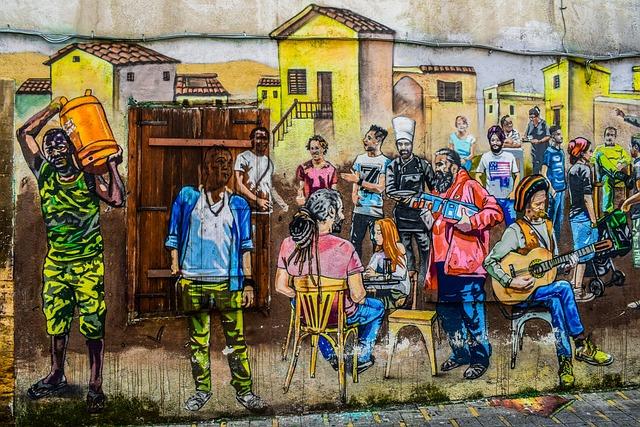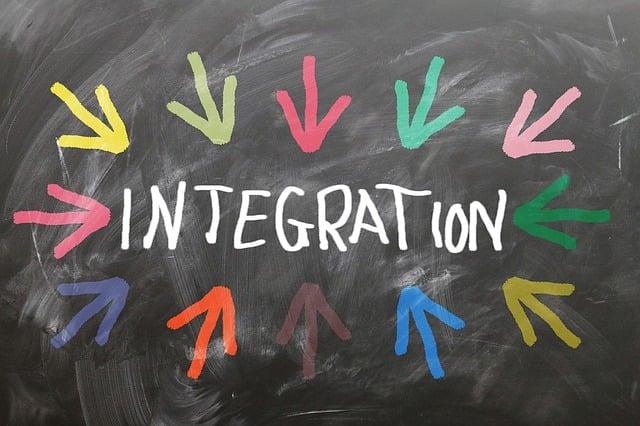Exploring the Dynamics of Immigration from Pakistan Today
In a world where borders seem both more defined and increasingly porous, the movement of people continues to shape societies, economies, and cultures in profound ways. Among the myriad stories woven into the fabric of global migration, the journey of individuals from Pakistan stands out as particularly complex and multifaceted. As the effects of economic shifts, political landscapes, and social changes ripple across the globe, Pakistanis are finding new avenues for opportunity, refuge, and connection far from their homeland. This article delves into the contemporary dynamics of immigration from Pakistan, illuminating the motivations driving this migration, the challenges that accompany it, and the vibrant contributions that Pakistani immigrants are making in their new communities. Through a lens of neutrality and curiosity, we seek to understand not just the numbers and statistics, but the human narratives that define this significant phenomenon in today’s interconnected world.
Understanding the Current Trends in Pakistani Immigration
The landscape of immigration from Pakistan is shaped by a variety of factors that reflect both domestic conditions and global dynamics. In recent years, economic instability, political uncertainty, and social challenges have intensified the desire for many Pakistanis to seek opportunities abroad. Additionally, the rise of digital technology has facilitated the search for jobs and resources internationally, leading to a more streamlined process for obtaining information about foreign employment prospects.
Key destinations for Pakistani immigrants include countries such as the United States, Canada, the United Kingdom, and Australia. These nations offer not only job opportunities but also established Pakistani communities, which can provide essential support to newcomers. A closer examination reveals some consistent trends:
| Destination | Reason for Immigration | Demographic Focus |
|---|---|---|
| United States | Career opportunities, education | Young professionals, students |
| Canada | Quality of life, immigration policies | Families, skilled workers |
| United Kingdom | Cultural ties, job market | Refugees, professionals |
| Australia | Labor shortage, lifestyle | Technical workers, students |
The increasing inclination towards skilled immigration highlights the importance of education and specialized training among the Pakistani populace. As global markets evolve, there is a growing demand for professionals in sectors like IT, healthcare, and engineering, prompting many Pakistanis to upgrade their skills before pursuing immigration. This trend not only caters to the global workforce needs but also shapes the future skill landscape within Pakistan itself.

Navigating the Challenges Faced by Pakistani Immigrants
For many Pakistani immigrants, the journey towards a new life is often fraught with numerous challenges that can feel overwhelming. Once they arrive in their host country, they confront the daunting task of navigating cultural adaptation, which encompasses understanding social norms, language barriers, and building community relationships. Engaging with local customs can be disorienting for many, leading to feelings of isolation. In order to succeed, many find that they must actively seek out community support, whether through cultural associations, local mosques, or even social media groups.
Furthermore, securing employment poses another significant hurdle. Many immigrants encounter issues related to credential recognition, where their qualifications may not be acknowledged or valued in their new environment. Added to this, there are often disparities in access to resources such as job training programs and networking opportunities. To address these challenges, it’s important for aspiring immigrants to gather information and seek assistance from non-profit organizations or government programs designed to support immigrants in their career pursuits.

Harnessing Opportunities for Economic Integration
The evolving landscape of immigration from Pakistan presents a plethora of avenues that can be effectively harnessed for economic integration. With an increasingly globalized world, the migration of skilled professionals has facilitated the exchange of knowledge and resources, ultimately strengthening both host and home economies. By tapping into the unique skills and cultural perspectives that Pakistani immigrants bring, regions can fill critical labor shortages and foster innovation. This not only enhances productivity but also contributes significantly to the diversity of the workplace, encouraging a more inclusive environment.
Moreover, the potential for economic integration can be further bolstered through cooperation between governments and the private sector. Initiatives such as training programs and entrepreneurial support can be designed to help immigrants transition smoothly into their new environments. By establishing partnerships that focus on mutual benefits, the following strategies can be implemented:
- Skill Development Workshops: Offering targeted training that aligns with local job markets.
- Financial Incentives: Implementing tax breaks for businesses that hire immigrants.
- Cultural Exchange Programs: Promoting understanding and collaboration between communities.
This collaborative approach not only aids in the assimilation of immigrants but also accelerates economic growth and stability, paving the way for a more connected global economy.

Policy Recommendations for a Sustainable Immigration Framework
To establish a sustainable immigration framework, it is vital to implement policies that promote both the economic integration of immigrants and the protection of their rights. This can be achieved by:
- Enhancing Pathways to Legal Status: Streamlining the application processes for work permits and residency, allowing skilled immigrants to contribute effectively to the economy.
- Strengthening Support Services: Offering language and job training programs to help immigrants adapt to their new environment and integrate into the workforce.
- Collaboration with Local Communities: Engaging local organizations to foster an inclusive atmosphere and facilitate social cohesion between immigrants and residents.
Moreover, addressing the root causes of immigration from Pakistan is essential for a comprehensive approach. Developing policies that aim at:
- Promoting Economic Opportunities: Investing in job creation and education in areas of high emigration to reduce the push factors.
- Enhancing Bilateral Relations: Strengthening diplomatic ties with host countries to encourage fair treatment and integration of Pakistani immigrants.
- Supporting Refugee Rights: Ensuring that asylum procedures are respectful of human dignity and protective of those fleeing persecution.
To Conclude
As we conclude our exploration of the dynamics of immigration from Pakistan today, it becomes clear that this complex tapestry is woven from a myriad of threads—economic aspirations, political landscapes, and deeply personal stories. Each individual journey reflects not only the challenges faced but also the resilience and hopes that accompany those who venture beyond familiar borders.
In an increasingly interconnected world, the narratives of Pakistani immigrants serve as a poignant reminder of the human spirit’s capacity to adapt and innovate, even in the face of adversity. As communities evolve and new generations carve out their identities amidst diverse cultures, the ongoing dialogue surrounding immigration will undoubtedly shape both the origin and destination countries alike.
As we continue to engage with these multifaceted issues, let us approach them with empathy and understanding. The stories of those who leave and those who remain are intertwined, reminding us that at the heart of any immigration narrative lies a shared humanity. The journey is far from over—both for individuals and for society as a whole—as we collectively navigate the path towards a future that honors the dreams and dignities of all.



